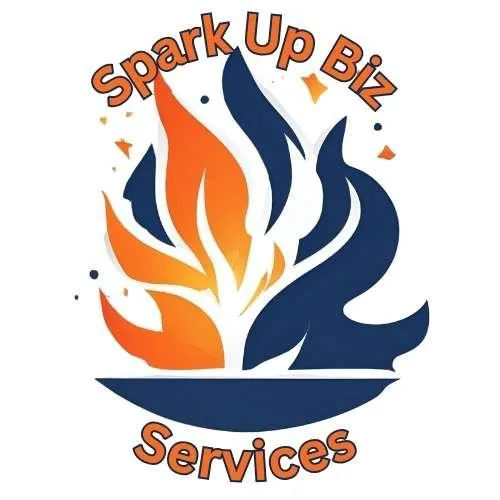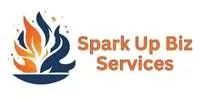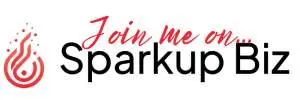Our Latest Articles

The Ultimate Guide to Keeping Your Sales Team Aligned With CRM Automation
The Ultimate Guide to Keeping Your Sales Team Aligned With CRM Automation
When Technology Meets Human Hustle
Picture this: your top salesperson just closed a massive deal—yet nobody on the team knew because the CRM wasn’t updated. Leads slipped through the cracks. Opportunities were forgotten. Revenue projections skewed wildly. Suddenly, a simple technology oversight spiraled into missed quotas, frustrated managers, and finger-pointing across departments.
Sound familiar?
You’re not alone. In today’s hyper-connected, high-velocity sales landscape, CRM automation is more than just another piece of software—it’s the backbone of your revenue engine. But an automated CRM, no matter how powerful, is only as effective as the people who use it. Without tight alignment between human effort and technological horsepower, your shiny new system can become a ball-and-chain, dragging your team down instead of propelling it forward.
According to a recent HubSpot survey, 22% of salespeople still aren’t sure what a CRM even is, and 40% continue to rely on outdated tools like spreadsheets and email threads. If you’re serious about building a sales force that not only survives but dominates your market, you need to bridge the gap between your team’s hustle and your CRM’s muscle—seamlessly, sustainably, and scalably.
Why Sales Teams Resist CRM Automation (And How to Fix It)
Before diving into solutions, let’s acknowledge a hard truth: resistance to CRM adoption is almost always emotional, not logical. You can drown your reps in dazzling ROI charts, Gartner Magic Quadrant placements, and three-year TCO analyses—but if you don’t address the feelings underneath, adoption will sputter and stall.
“You can’t logic your way past emotional resistance—you have to listen and lead.”
1. Fear of Change
What happens in their brains?
Salespeople are creatures of habit. Even a flawed process feels safe because it’s known. The prospect of clicking around a new interface, re-learning workflows, and potentially missing out on commission-earning activities triggers real anxiety.Fix it by:
Mapping the journey: Create a side-by-side process map of “old way” vs. “new way” to demystify steps.
Offering safety nets: Guarantee that quota plans and commission calculations won’t be impacted during the transition period.
2. Perceived Complexity
The engineer’s trap: Many CRMs are designed by feature-hungry engineers, not practicing sales reps. Endless fields to fill, convoluted dashboards, and customization options that require a PhD in database schema only intimidate users.
Fix it by:
Tailoring the interface: Hide or disable any fields, buttons, or modules that your team doesn’t absolutely need.
Role-based layouts: Give SDRs, AEs, and Sales Engineers only the screens relevant to their daily tasks.
3. Lack of Immediate Benefit
Busywork syndrome: If a rep has to log every call, upload every email, and score every lead without seeing instant payoff, the CRM feels like extra work, not value creation.
Fix it by:
Showcase quick wins: Roll out a high-impact automation—like automatic email logging with 1–2 clicks, or lead scoring that surfaces hottest prospects. Within days, highlight increased productivity metrics.
Personal dashboards: Build a “My Wins This Week” widget that aggregates closed-won deals, follow-up reminders, and time saved.

Practical Fixes to Drive CRM Adoption
Involve Salespeople in CRM Decisions
Early-stage workshops: Before you sign the contract, host interactive sessions where reps can play with candidate CRMs.
Demo Day idea: Divide your sales team into small groups, assign each group a CRM trial account, and have them score ease-of-use, feature relevance, and “wow factor.”
Outcome: By the time you finalize the purchase, the majority of users feel a sense of ownership—and a vested interest in making the system work.
Prioritize User-Friendly Tools
Minimal clicks to record data: Aim for two clicks or fewer to create a new lead, log a call, or update an opportunity stage.
Mobile accessibility: Your reps aren’t chained to desks. A polished mobile experience—complete with offline mode—keeps them logging from the field.
Email & calendar integration: Auto-capture meeting invites and correspondence to eliminate data entry drudgery.
Golden Rule: If it takes more than two clicks to log a lead, you’ve already lost the battle.
Showcase Quick Wins
Lead Scoring Automation
Automatically prioritize leads based on firmographics, web behavior, and past engagements.
Result: SDRs focus on the top 20% of leads that drive 80% of pipeline.
Automated Email Sequencing
Build templates and workflows to ensure every prospect gets timely follow-up.
Result: Response rates jump, and manual follow-up emails drop by 65%.
Instant Dashboards
Create real-time charts for open pipeline, forecast vs. actual, and rep activity.
Result: Managers spend less time chasing reports and more time coaching.
The Three Pillars of Alignment
Alignment isn’t a one-and-done project; it’s an ongoing commitment resting on three pillars: Communication, Training, and Accountability.
1. Clear Communication
Why it matters to them: Tie CRM success directly to individual rep goals—whether that’s earning more commission, hitting promotion tracks, or building a personal brand.
How it fits into daily workflow: Demonstrate exactly when and how the CRM should be used—during prospecting, at call wrap-up, or when qualifying.
What leadership expects: Publish a simple “CRM Playbook” that outlines key usage rules, naming conventions, and data-hygiene standards.
Tip: Use storytelling.
“When Marcus started leveraging lead-scoring automation in CRM, his monthly close rate jumped from 22% to 26% in just two months.”
2. Consistent Training
Ongoing over one-and-done:
Monthly “CRM Hacks” webinars to explore hidden features.
Weekly 10-minute “micro-learning” sessions embedded in team huddles.
CRM Champions: Identify high-achievers who evangelize best practices, conduct peer coaching, and troubleshoot day-to-day issues.
Onboarding bootcamps: New hires should spend dedicated time—at least a half day—in a hands-on CRM workshop.
Example: At ZoomInfo, every weekly sales meeting opens with a 10-minute demo of a single CRM optimization tip, keeping habits fresh and learnings top of mind.
3. Culture of Accountability
Empower, don’t punish:
Publicly celebrate the top 5 “CRM Heroes” each month, with leaderboards and shout-outs.
Tie CRM hygiene to performance reviews, but frame it as a vote of confidence in the rep’s future success.
Gamification:
Quarterly “Clean Data Challenges” where teams compete for prizes.
Badges for early adopters of new features (e.g., “Email Logging Ninja”).

Best Practices for CRM Automation That Empowers, Not Alienates
“The best CRM automations handle the grunt work—not the relationships.”
Automate Data Entry, Not Conversations
Automate the capture of contact records, meeting notes, and email threads—but let reps drive the human engagement.
Use AI assistants or email parsers to fill in field values from call transcripts or inbound messages.
Integrate CRM With Your Entire Sales Stack
Single source of truth: Connect your CRM with email, calendar, telephony, social-selling tools, and even your marketing automation platform.
Eliminate redundant data entry: No rep should ever type the same piece of information twice.
Callout:
Unify or Die. Disconnected systems crush productivity—and morale.
Simplify, Simplify, Simplify
Short, focused forms: Limit form fields to essential information.
Quarterly archive & retire: Identify and remove workflows, custom objects, or fields that haven’t been used in six months.
Redundant-field consolidation: Merge or delete overlapping fields to reduce confusion.
Case Study: After simplifying their CRM forms, a major B2B logistics company saw usage jump 37% within 90 days.
Measure What Actually Matters
Skip vanity metrics: Don’t obsess over “emails sent” or “calls made.”
Focus on revenue drivers: Pipeline health, opportunity-to-close ratios, and lead-response times.
Tie dashboards to dollar signs: Show reps exactly how an extra hour spent logging data translates into pipeline coverage.
Gamify CRM Usage
Leaderboards: Show real-time rankings for data hygiene scores, follow-up completion rates, or lead-response SLAs.
Prizes & recognition: Gift cards, trophies, or even extra PTO for top performers.
Hall of Fame: Lifetime badges for reps who hit consistent 95%+ CRM compliance.

How to Choose the Right One
Criteria for Selection
Mobile-First Design
Ensure full feature parity on iOS and Android.
Integration Capabilities
Look for open APIs and native connectors to your favorite sales tools.
Flexible Pricing
Scale seat licenses and feature tiers up or down without eye-watering costs.
Built-in AI Tools
Next-best-action suggestions, sales-cycle predictions, and automated data-cleaning.
Customization Depth
Balance: not so customizable that you need a dedicated admin to survive—but enough to adapt to your unique process.
Pro Tip:
Buy for where you’re going, not where you are today. If you anticipate doubling headcount next year, choose a platform that can handle 250 seats without a forklift upgrade.
Common CRM Alignment Pitfalls (And How to Dodge Them)
1. Over-Automating
The danger: Excessive automation can strip away the personal touch that builds trust.
Solution: Automate only the repetitive, administrative tasks—never the core sales conversation.
2. Neglecting Human Coaching
The danger: Thinking automation replaces management leads to skill decay.
Solution: Maintain regular call-shadowing, deal-strategy sessions, and role-play workshops.
3. Ignoring Frontline Feedback
The danger: Building in a vacuum results in features no one uses.
Solution: Run quarterly “Voice of the Rep” surveys, plus monthly office hours where anyone can request tweaks or new automations.
Real-World Example:
A fintech startup discovered through rep interviews that its drip sequences were burying critical follow-ups. A minor workflow tweak—sending a high-priority alert for inbound inquiry—saved reps three hours a week and boosted quarterly revenue by 12%.
The Future of CRM and Sales Alignment: AI, Predictive Analytics, and Beyond
CRM is rapidly evolving from a static data repository into an active participant in your sales process. Here’s what’s on the horizon:
Next-Best-Action Recommendations
Real-time suggestions powered by machine learning, guiding reps to the highest-impact activity at every step.
Predictive Deal Scoring
AI models that forecast deal close probability, highlight at-risk opportunities, and recommend tailored next steps.
Churn-Risk Alerts
Alerts that surface customers or prospects likely to disengage, enabling pre-emptive outreach.
AI-Driven Sales Coaches
Virtual assistants that analyze call recordings, offer feedback on talk–listen ratios, and suggest objection-handling tactics.
Hyper-Automated Workflows
End-to-end sequences that trigger cross-departmental tasks—marketing delivers content, customer success schedules demos, finance prepares contracts—all orchestrated by the CRM.
Voice-Command CRM Entries
Hands-free data capture on the go: “Log a call with Acme Corp, outcome: demo scheduled for May 29.”
Fact: By 2026, 60% of sales organizations will shift from intuition-based selling to data-driven decision-making, according to Gartner projections.
Conclusion: Winning Together—Humans and Machines
CRM automation isn’t about replacing your salespeople—it’s about elevating them. Think of your CRM as a silent, tireless partner that:
Records every interaction reliably.
Surfaces next steps at the perfect moment.
Highlights risks and opportunities you might otherwise miss.
Meanwhile, your reps focus on what they do best: building trust, solving complex problems, and closing deals—the uniquely human skills that no software can replicate.
Remember: aligning your team with CRM automation isn’t a one-time project—it's a living, breathing journey. It demands:
Leadership that models and reinforces desired behaviors.
Communication that connects CRM use to personal success.
Training that’s continuous and engaging.
Accountability that rewards excellence and data integrity.
Champion your CRM not as a tool of control, but as a springboard for unstoppable growth. Because when technology and people move together—seamlessly—you don’t just meet quotas; you redefine what success looks like.
You win.
Interested in a CRM with a ton of features? We've got a great one with a ton of features, an affordable cost, and will help you streamline your business. Give us a call to set up a demo!
#CRMAlignment, #SalesAutomation, #SalesLeadership, #CRMAdoption, #SalesEnablement, #SalesGrowth, #CRMBestPractices, #CRMTraining, #AutomationInSales, #FutureOfSales



